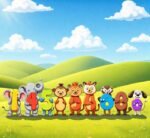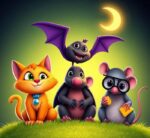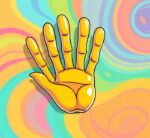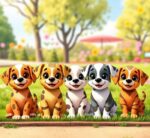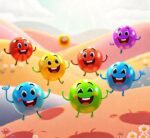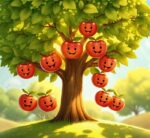- You are here:
- Home »
- words
- » Kindergarten Words That Start With T [LIST]
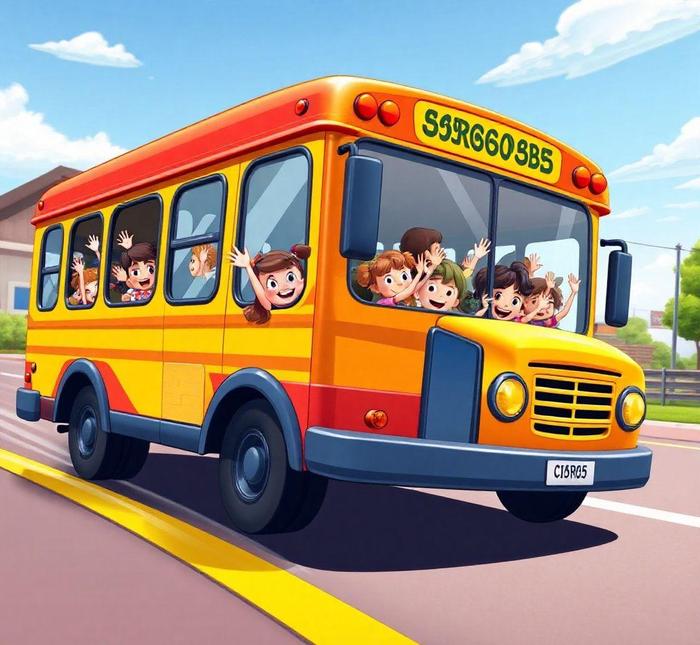
Kindergarten Words That Start With T [LIST]
Teaching young children new vocabulary is an essential part of early childhood education, and focusing on words that begin with specific letters can be a fun and effective way to help kids build their language skills. In this article, we will explore a list of kindergarten words that start with the letter “T”. These words range from simple, everyday objects to action verbs and descriptive terms, offering a wide variety of opportunities for learning. By incorporating these words into lessons and activities, educators and parents can encourage children to practice pronunciation, expand their vocabulary, and develop a stronger foundation in language arts.
The letter ‘T’ is a great place to start when introducing new words to young learners, as it is one of the most commonly used letters in the English language. From ‘table’ to “tiger”, the ‘T’ sound is easy for kids to articulate and is found in many words they encounter in their daily lives. This list of kindergarten words not only supports phonetic development but also enhances early literacy skills by connecting children to the world around them. In the following sections, we will break down various categories of ‘T’ words, providing examples and tips on how to incorporate them into fun and engaging classroom activities.
Kindergarten Words That Start With T
1. table
A table is a piece of furniture with a flat surface used for working, eating, or holding things. It usually has four legs and can be found in many places, like homes or schools.
Examples
- The table is made of wood.
- Please set your books on the table.
- We eat our meals at the table.
2. tiger
A tiger is a large wild animal that lives in forests and jungles. It has orange fur with black stripes and is known for being a strong predator.
Examples
- The tiger is orange with black stripes.
- Tigers live in the jungle and hunt for food.
- We saw a tiger at the zoo.
3. train
A train is a type of transportation that moves along tracks. It can carry people or goods and is commonly used in cities or between countries.
Examples
- The train goes very fast.
- I like to watch the train go by.
- We are going to the station to take the train.
4. turtle
A turtle is a small animal with a hard, protective shell. It can live on land or in water and is known for its slow movements.
Examples
- The turtle has a hard shell.
- Turtles move slowly on land but swim fast in water.
- I saw a turtle at the beach today.
5. tree
A tree is a tall plant with a trunk, branches, and leaves. Trees provide oxygen, shade, and food for many animals.
Examples
- The tree is very tall.
- Birds like to build nests in trees.
- We sit under the tree to stay cool in the shade.
6. thumb
A thumb is the short, thick finger on your hand that helps you grip things. It is located on the side of your hand and is opposite to your other fingers.
Examples
- You have five fingers on each hand, and one of them is your thumb.
- The thumb helps you hold things.
- Can you give me a thumbs up?
7. taco
A taco is a Mexican food made of a folded tortilla filled with different ingredients like meat, cheese, lettuce, and salsa.
Examples
- I love eating tacos with cheese and lettuce.
- We had tacos for dinner last night.
- The taco shell is crispy and delicious.
8. tomato
A tomato is a red fruit often used in salads and cooking. It has a soft inside with seeds and is rich in vitamins.
Examples
- Tomatoes are red and juicy.
- We put tomato slices on our sandwiches.
- Tomatoes grow on vines in the garden.
9. tea
Tea is a drink made by soaking tea leaves in hot water. It can be served hot or cold and is often flavored with lemon or sugar.
Examples
- My mom drinks tea every morning.
- Would you like some hot tea?
- Tea can be sweet or sour, depending on how you make it.
10. toy
A toy is something children play with, like dolls, cars, or blocks. Toys come in many shapes, sizes, and colors, and they help children learn and have fun.
Examples
- I love playing with my new toy car.
- She has many stuffed animals as toys.
- Toys are fun to play with during recess.
11. truck
A truck is a large vehicle used to carry heavy loads, like goods or materials. It has a strong engine and a big bed for transporting items.
Examples
- The truck is carrying boxes to the store.
- Big trucks drive on highways.
- We watched a truck unload supplies.
12. track
A track is a path or route where something travels, like a train track or a running track. It is often straight or curved and helps guide movement.
Examples
- We run on the track at school.
- The train is following the track to the station.
- The race was held on a special running track.
13. treehouse
A treehouse is a small house built in the branches of a tree. It is a fun place for children to play or relax.
Examples
- We built a treehouse in our backyard.
- The treehouse is high up in the tree.
- We play in the treehouse after school.
14. thumbtack
A thumbtack is a small, sharp pin used to attach things to a surface, like a wall or bulletin board. It has a flat head and is easy to push with your thumb.
Examples
- I used a thumbtack to hang my picture on the wall.
- Be careful with the thumbtack, it’s sharp.
- We need a thumbtack to attach the paper to the board.
15. trolley
A trolley is a type of small, open-air vehicle that runs on tracks and is used to transport people, often in cities or tourist areas.
Examples
- We rode the trolley around the city.
- The trolley makes a bell sound when it moves.
- Trolleys are fun to ride when visiting a new place.
16. tornado
A tornado is a powerful, rotating column of air that can cause damage as it moves across the ground. It is a weather phenomenon that often forms during storms.
Examples
- A tornado is a very strong wind that spins in a circle.
- We saw the tornado from a safe place inside.
- Tornadoes can cause a lot of damage to buildings.
17. tug
To tug means to pull something with a quick, sharp motion. It is often used when playing games or when trying to move something stuck.
Examples
- The dog likes to tug on the rope.
- We played a game of tug-of-war at recess.
- I had to tug on the door to open it.
18. tank
A tank can be a large container used to hold liquids, like water or fuel. It can also refer to a large military vehicle with heavy armor.
Examples
- The fish live in a tank with water.
- The army uses tanks in battles.
- We saw a big tank at the museum.
19. twin
Twins are two children born at the same time from the same mother. They may look alike or different, and sometimes share similar traits or interests.
Examples
- My sister and I are twins.
- The twins look exactly alike.
- The twins played together in the sandbox.
20. tent
A tent is a portable shelter made of fabric or plastic that is set up outdoors, usually for camping or outdoor activities.
Examples
- We slept in a tent during our camping trip.
- The tent was set up next to the campfire.
- I love going camping in the tent with my family.
21. tooth
A tooth is a hard, white object in the mouth used to chew food. Humans have baby teeth that eventually fall out and are replaced by permanent teeth.
Examples
- I brush my teeth every morning and night.
- My tooth hurts because I ate too much candy.
- We need to take care of our teeth to keep them healthy.
22. towel
A towel is a piece of cloth used for drying the body, face, or hands after washing. Towels come in various sizes and are often soft and absorbent.
Examples
- I dried my hands with a towel after washing them.
- The towel is soft and fluffy.
- You should always bring a towel to the beach.
23. toast
Toast is bread that has been browned by heat, often eaten for breakfast with toppings like butter or jam.
Examples
- I like to eat toast with butter and jam.
- The bread turned brown when I toasted it.
- We had toast for breakfast with eggs.
24. trail
A trail is a path or track, often found in nature, used for walking, hiking, or traveling. Trails can be found in forests, parks, and other outdoor areas.
Examples
- We walked along the trail in the forest.
- The trail was muddy after the rain.
- A deer left a trail in the snow.
25. tape
Tape is a thin, sticky material used to stick things together. It is often used for wrapping, sealing, or attaching items.
Examples
- I used tape to stick the paper to the wall.
- The tape helped to fix the broken box.
- You can wrap a gift using colorful tape.
26. treat
A treat is a special, often sweet, food given as a reward or to enjoy. Treats are often given for special occasions or as a reward.
Examples
- We had ice cream as a special treat.
- The dog loves his treat after he learns a new trick.
- My mom gave me a treat for being helpful.
27. trumpet
A trumpet is a musical instrument made of brass with a flared bell. It produces a loud, bright sound and is often used in bands or orchestras.
Examples
- The trumpet is a loud brass instrument.
- He played a song on his trumpet at the concert.
- I want to learn how to play the trumpet.
28. triangle
A triangle is a flat shape with three straight sides and three corners. It is one of the basic shapes in geometry.
Examples
- A triangle has three sides and three corners.
- We made a triangle with our hands.
- The roof of the house is shaped like a triangle.
Historical Context

The letter T occupies a significant place in the history of language, especially when we look at its role in the development of English vocabulary. In the context of kindergarten education, words beginning with the letter T are not just simple building blocks; they are echoes of a rich linguistic past that stretches across centuries. Historically, the evolution of the English language involved a complex mingling of Latin, Old English, Norse, and other European languages, all of which contributed to the diverse vocabulary we use today.
The concept of teaching children through the alphabet—especially introducing them to words that start with each letter—can be traced back to early 19th-century education reforms, which emphasized the importance of phonetic awareness in literacy development. Around the 1800s, the advent of printed primers and ABC books designed for young learners began to take hold. These primers often incorporated familiar objects, animals, and concepts, many of which were labeled with their corresponding first letter, making the letter T especially popular for its ability to start a broad range of easy-to-understand words.
Words like "tree," "toy," and "train" were often included because they described things that were physically present in children’s immediate surroundings—things they could see, touch, and experience. These words formed the early foundation of a child’s vocabulary, helping them connect sounds to objects in the world around them. Additionally, many of these words originated from the Anglo-Saxon and Germanic roots that are the foundation of modern English, giving children a glimpse into a linguistic past that predates even the earliest forms of formal schooling.
Word Origins And Etymology
Understanding the origins of words is an enriching way to deepen a child’s engagement with language, even at the kindergarten level. The words that children first encounter, such as those beginning with T, often have fascinating histories that reveal much about the evolution of language itself.
Tree, for instance, comes from the Old English word treow, which is related to the Old Norse tré and the German baum. These terms can be traced further back to Proto-Indo-European roots drew-, which meant “oak” or “tree.” The word has survived through centuries, adapting to modern uses but always maintaining its connection to nature.
Similarly, toy has an intriguing evolution. It originates from the Middle English word toi, which meant “a thing of little importance or amusement.” It came from the Old French word toier, meaning “to play.” As a term, toy was initially used to describe something small or trivial, but over time, it evolved to represent the playthings and objects of delight that children use for entertainment. This shift in meaning reflects the changing values of society, where the importance of childhood play and learning became more recognized and valued.
Train, a word that conjures images of locomotive engines, actually comes from the Middle French word trainer, meaning “to pull” or “to drag.” It is rooted in the Latin trahere, meaning “to pull.” This connection to movement and pulling is vital to understanding how trains work. The word’s journey from a term for dragging or pulling to its modern association with trains demonstrates how language evolves to reflect new technologies and societal advancements.
These examples show how words that are central to early childhood development have deep and varied etymologies, providing children with a subtle but profound connection to the past through language.
Common Misconceptions
While the idea of teaching kindergarteners words beginning with the letter T might seem straightforward, there are some misconceptions that can arise, particularly around the sounds these words make and how they are perceived by young learners.
One common misconception is that words beginning with T all sound the same. This is not true. While many kindergarten words starting with T do have a clear and sharp "tuh" sound, there is variation. For example, the word three has a soft "th" sound, while train has a distinct "t" sound. The soft versus hard pronunciation of consonants can be tricky for young learners, especially when they are just starting to discern phonemes in speech. The difference between the th sound and the t sound is something that many children struggle with, which can sometimes lead to confusion when they first encounter these words in reading.
Another misconception is that children will immediately understand the meaning of the words they are learning. While the phonetic recognition of words like table or tiger may come quickly, the conceptual understanding of these words can take longer to develop. For instance, a child may know how to pronounce the word turtle, but may not yet fully grasp what a turtle is or what it represents in terms of habitat, behavior, or classification as an animal. Similarly, the word team might be understood in a social sense, but its broader implications in sports, cooperation, and collaboration might not be apparent to a child at first.
Finally, another common misconception is that all words beginning with T are appropriate for children to learn in kindergarten. Words like tornado or terror might begin with the letter T, but they are often too complex or emotionally intense for young children. Teachers and parents should carefully consider the developmental appropriateness of the words they introduce. While it’s valuable to challenge children’s vocabulary, it’s equally important to ensure that the words resonate with their everyday experiences and do not create undue fear or confusion.
Conclusion
In conclusion, the words that start with the letter T represent far more than just simple building blocks of language for kindergarten students. These words carry with them centuries of linguistic history, deeply rooted in the evolution of the English language. From nature ("tree") to play ("toy") and technology ("train"), these words open windows into the past, showing how language has evolved alongside human culture, discovery, and creativity.
Understanding the etymology of words such as tree, toy, and train can enrich a child’s learning experience by connecting them to a broader historical context. These early lessons in phonetics and word meanings provide a foundation for later literacy development and critical thinking skills. At the same time, it is essential to be aware of common misconceptions and pitfalls, particularly when it comes to pronunciation and conceptual understanding.
Ultimately, teaching kindergarten students words that start with T is not just about fostering language acquisition but about sparking curiosity, connecting them with history, and preparing them for a world of learning and discovery. Through each new word, children are invited to explore the world, make sense of it, and begin their journey as lifelong learners.

